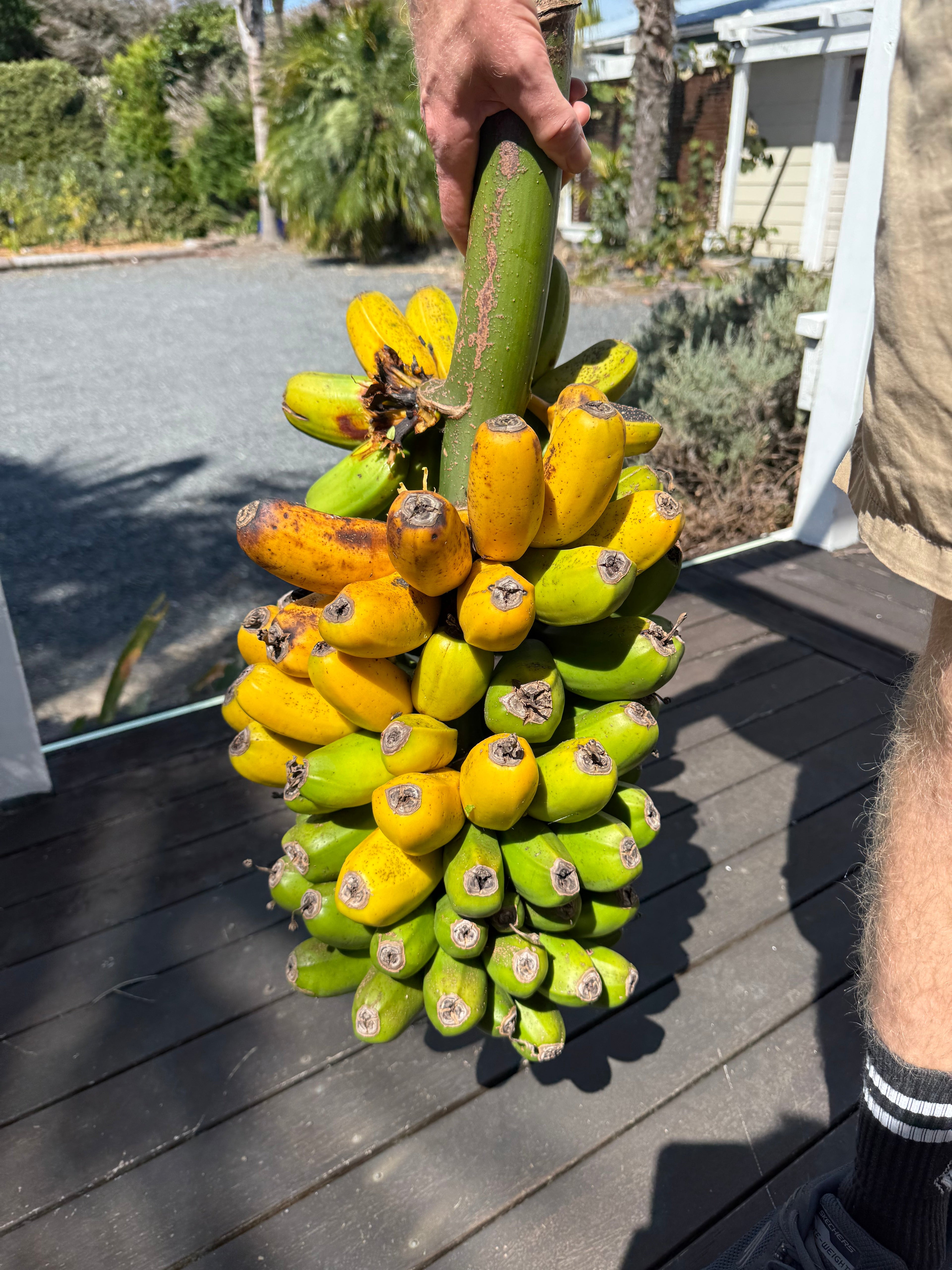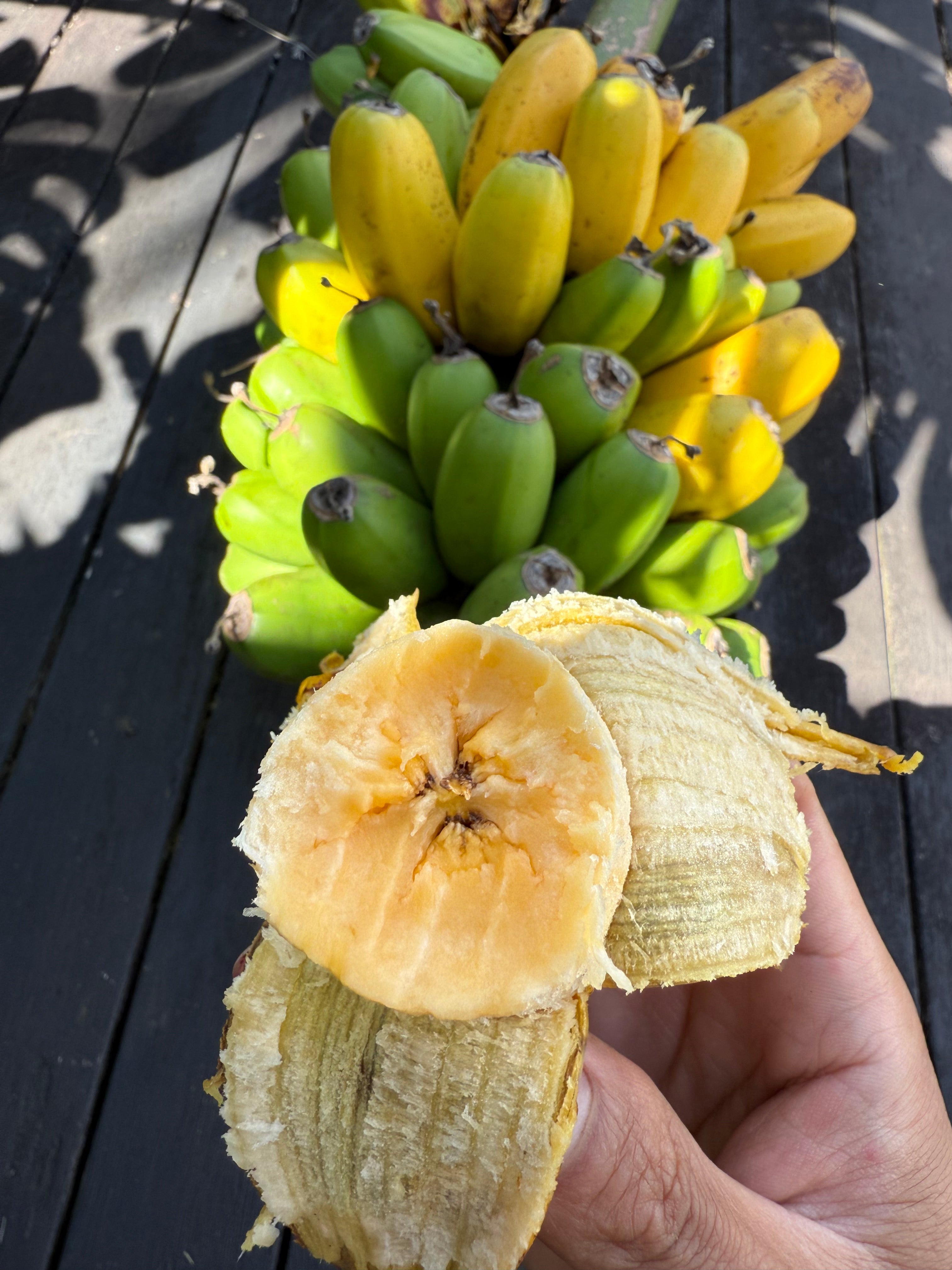Banana - Hopa
- Regular price
-
$60.00 - Regular price
-
- Sale price
-
$60.00
Couldn't load pickup availability
The Hopa banana is a hybrid variety that combines the characteristics of both cooking bananas and dessert bananas. When green and unripe, it can be used for cooking, similar to a plantain. As it ripens and turns yellow, it develops a thick, waxy peel and a distinctive bulbous shape with blunt, square ends. At this stage, the flesh becomes soft, sweet, and ideal for fresh eating.
This variety thrives particularly well in the northern regions of New Zealand. It is known for its vigorous growth, producing numerous fast-growing pups and bearing fruit relatively early.
Hopa banana plants typically reach a height of around 3 to 4 meters.
Banana Plant Care Tips
-
Sunlight: Banana plants thrive in full sun, so it's best to plant them in an area that receives at least 6-8 hours of direct sunlight per day.
-
Soil: Banana plants prefer well-drained soil that is rich in organic matter. A pH range of 5.5-7.0 is ideal for optimal growth.
-
Watering: Banana plants require regular watering, especially during the growing season. Keep the soil moist, but not waterlogged. Overwatering can cause the roots to rot.
-
Fertilizer: Banana plants are heavy feeders and require regular fertilization. Apply a balanced fertilizer every 4-6 weeks during the growing season.
-
Mulching: Mulch around the base of the plant to help retain moisture and suppress weeds.
-
Pruning: Remove any dead or damaged leaves and suckers (smaller offshoots that grow from the base of the plant) regularly. This will help promote healthy growth and prevent disease.
-
Pests and diseases: Banana plants are susceptible to a variety of pests and diseases, so it's important to monitor the plant regularly for any signs of infestation or disease. Common pests include aphids, spider mites, and mealybugs, while common diseases include Panama disease and Sigatoka leaf spot.
-
Harvesting: Bananas are typically harvested when they are fully ripe and the skin is yellow. Cut the bunch off the plant with a sharp knife and allow the fruit to ripen further at room temperature.








